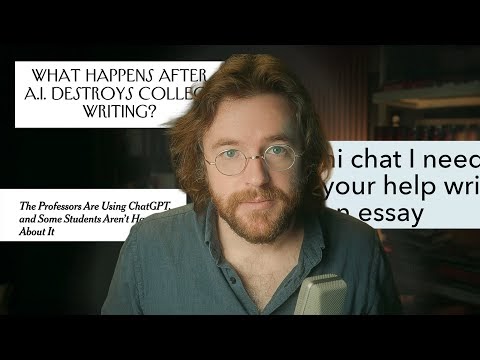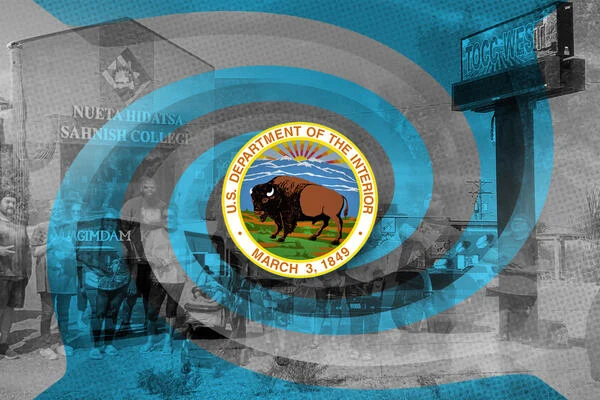On a recent flight, a small child in the row behind me shrieked with piercing intensity. The passenger beside me leaned over and whispered, with assurance, “He’s autistic.”
Neither of us knew the child. What we had was a familiar modern reflex: reaching immediately for a diagnostic label.
Yet the scene likely had simpler explanations. Any parent knows toddlers often melt down. They have immature nervous systems, poor emotional regulation, and lack the linguistic tools to express their discomfort.
Air travel makes this exponentially worse: altitude pressure that feels like a drill behind the eardrum, bright lights, crowding, disorientation, loss of routine, confinement in an airplane seat, and helpless parents who cannot walk, rock, or soothe as they ordinarily would.
In such a setting, a screaming child isn’t a clinical puzzle. He or she is a human being overwhelmed by an environment for which their developmental stage is simply unsuited.
But what struck me wasn’t the child’s distress—it was my fellow passenger’s interpretive leap. We now default to pathology. Behaviors that earlier generations would have recognized as overtiredness, frustration, temperament, or physiological misery are now reframed as sensory processing issues, spectrum behaviors, and emotional dysregulation.
A century ago, William James or Émile Durkheim would have been baffled by our eagerness to see ordinary distress as a clinical symptom. They assumed a different relationship between individuals and their environments. They looked first to situational explanations, developmental stages, social settings, and institutional pressures—not to internal pathology.
The classical social theorists were exquisitely attuned to context. They understood that behavior is produced not just by minds but by milieus; not only by individual traits but by social expectations, institutional routines, physical environments, and cultural frames.
They would have asked: What was the situation? What were the constraints? What was the child’s developmental stage? What stresses shaped the parents’ responses? Why do modern societies interpret certain behaviors this way?
Those are the questions we increasingly fail to ask.
The Classroom Mirror
I see this reflex every semester. Many students arrive with formal diagnoses—ADHD, social anxiety, depression, autism spectrum traits—and often understand these labels as central to their identity.
I don’t doubt these conditions are real for many. But far more often than we acknowledge, their struggles stem less from an intrinsic disorder than from a structural mismatch between who they are and the environments we place them in.
Large lecture halls; nonstop digital distraction; relentless assessment; pressure to perform perfectly; overcrowded advising systems; erosion of in-person community; feeling constantly watched and perpetually behind—these aren’t symptoms of personal pathology. They’re central to how colleges are currently designed. They generate anxiety, cognitive overload, disconnection, and inadequacy in perfectly healthy young adults.
Yet in a culture where we no longer know how to talk about situational or structural problems, students understandably look inward. What earlier generations might have described as exhaustion, loneliness, discouragement, confusion, or developmental turbulence is now interpreted as a disorder to be treated.
We diagnose individuals when the real problem lies in the systems, structures, and expectations surrounding them. Classical social theorists understood something we’ve forgotten—that human beings cannot be separated from the worlds they inhabit, and what looks like personal failure is often the predictable result of social arrangements, institutional pressures, and cultural transformations.
Many problems we treat as individual psychology are, in fact, social. What feels personal is often produced by institutions, expectations, and culture.
The Lost Questions
There’s a paradox at the heart of contemporary social analysis. We have more data than ever—surveys tracking happiness, studies measuring loneliness, algorithms predicting behavior, and neuroscience mapping the brain. We can quantify anxiety rates, document declining social trust, and measure screen time to the second.
Yet for all this empirical precision, we seem less able than earlier generations to explain why wealthy, free, technologically advanced societies produce so much unhappiness, alienation, and despair.
Classical social thinkers—from roughly the 1880s through the 1950s—understood something we’ve forgotten. They grasped that modernity wasn’t simply adding new goods (wealth, freedom, and technology) to human life while leaving fundamentals unchanged. It was dissolving the very frameworks, rituals, and structures that had given life meaning, connection, and purpose.
Modernity was a package deal, and the price of its benefits was the loss of much that made life livable.
Contemporary social science has largely abandoned this tragic sensibility. We analyze discrete variables—income inequality, screen time, political polarization—without attending to deeper structural transformations that generate these symptoms.
We prescribe technical fixes—better mental health services, regulated social media, and reformed institutions—without recognizing that problems run deeper than any policy intervention can reach.
The classical thinkers knew better. They understood that modernity’s discontents weren’t bugs to be fixed but features of the system itself.
What the Classics Saw
A core insight runs through the writings of Weber, Durkheim, Simmel, Tönnies, Polanyi, and others: modern life systematically dissolves the dense webs of meaning, obligation, and continuity that structured pre-modern existence. This dissolution wasn’t avoidable—it was the necessary condition for everything modernity promised.
Tönnies on the Shift from Community to Society
Ferdinand Tönnies’s distinction between gemeinschaft (community) and gesellschaft (society) captures what changed. Gemeinschaft described life organized around kinship, locality, tradition, and unreflective bonds that made people part of something larger than themselves. You didn’t choose your village, extended family, place in the social order, or obligations to neighbors. These were given, woven into existence’s fabric.
Gesellschaft described modern life organized around contract, choice, rational calculation, and instrumental relationships. You choose your career, residence, and associations. Relationships are voluntary, revocable, and organized around mutual benefit rather than organic solidarity. This brought enormous gains in freedom and opportunity. But it also meant nothing was given, everything was optional, all relationships were contingent rather than fixed.
The real loss wasn’t some sentimental yearning for village life. It was the disappearance of what Robert Nisbet called “intermediate institutions”—the extended families, congregations, civil associations, unions, and community networks that once connected individuals to one another and gave daily life structure, support, and meaning.
Church, guild, neighborhood, extended family, and craft tradition weren’t just social organizations but ontological anchors. They provided identity, purpose, standards of excellence, and narratives connecting past to future. When they dissolved or became voluntary lifestyle choices rather than unchosen obligations, something irreplaceable was lost.
Durkheim on Anomie
Émile Durkheim argued that people need moral frameworks—not in the sense of strict rules or puritanism, but shared expectations that help us decide what goals are reasonable and what counts as “enough.” Without those external standards, our desires have no limits; we keep wanting more without knowing why or to what end.
This breakdown of guiding norms is what Durkheim meant by anomie. It’s not just chaos or “normlessness.” It’s the collapse of the social structures that tell us how to measure success, how to live a meaningful life, and where to direct our ambitions. When those frameworks erode, people feel unmoored—driven by endless wants but with no sense of direction or satisfaction.
In the pre-modern world, Durkheim argued, people lived inside thick webs of meaning that helped them understand who they were, what counted as a good life, and when enough was enough. These frameworks came from many places: religious teachings about one’s duties, craft traditions that defined good work, sumptuary rules that kept status competition in check, seasonal rhythms that shaped time, and life-cycle rituals that marked major transitions.
These systems could certainly be restrictive, but most people experienced them as simply the way life worked—structures that offered direction, limits, and shared expectations.
Modernity dismantled many of these frameworks in the name of individual freedom and social mobility. Suddenly, people could aspire to anything and reinvent themselves entirely. But with old limits gone, desires multiplied. If you can always become more, achieve more, accumulate more, how do you ever know when you’ve done enough? What tells you that you are successful, secure, or “on track”?
The result wasn’t pure liberation. It was a new kind of burden: wanting without an obvious endpoint, striving without clear measures, comparing yourself endlessly to others with no shared standard to anchor the process.
This helps explain why so many people today feel anxious despite rising living standards. Wealth can meet basic needs, but it also fuels comparison—and modern life has stripped away many of the boundaries that once contained those comparisons. In achievement-driven cultures, where people set their own goals and judge themselves against constantly shifting internal standards, nothing ever feels sufficient.
Weber’s Iron Cage
Max Weber’s concept of rationalization captured another major shift in modern life: institutions stopped being guided by tradition, shared judgment, or moral purpose and instead became organized around efficiency, calculation, and technical control.
Decisions that once involved human judgment increasingly followed rules, metrics, and procedures. This made institutions more predictable and effective—but also more rigid and impersonal.
Modern life came to be shaped by what Weber called instrumental rationality: finding the most efficient means to a given end. Bureaucracies, markets, legal systems, and scientific institutions operate this way. The result was extraordinary productivity and administrative capacity. But it also stripped institutions of meaning and moral depth.
Weber called this disenchantment. The world no longer appeared as a moral or spiritual order. It became a set of problems to manage, resources to optimize, and processes to streamline.
His metaphor of the iron cage captured the paradox: we built rational systems to serve human needs, but those systems now constrain us. Bureaucratic procedures, market incentives, and technological imperatives keep operating even when they undermine human flourishing. Individuals become replaceable “human resources,” valued for their functions rather than their purposes.
Simmel on Metropolitan Life
Georg Simmel’s 1903 essay “The Metropolis and Mental Life” reads uncannily like a diagnosis of smartphone culture. Simmel argued that modern city life bombards people with constant sensory and social stimuli. To cope, the urban mind develops a protective numbness—a “blasé attitude”—marked by detachment, indifference, and a shrinking capacity to feel surprise or deep emotion.
Urbanites, he wrote, become more calculating because their social world is crowded with brief, superficial interactions. When you have to navigate countless encounters each day, you evaluate people quickly, in instrumental terms. The result is thinning of relationships: less depth, less intimacy, fewer truly authentic exchanges. The emotional and cognitive energy required for rich connection is already spent fending off overstimulation.
If you swap “metropolis” for “social media,” Simmel’s analysis becomes even more resonant. The endless feed, the pressure to maintain hundreds of shallow ties, the constant performance of the self, the transformation of attention and emotion into metrics—these conditions supercharge the very defenses Simmel described. We become numb to protect ourselves, then wonder why so little feels meaningful anymore.
Polanyi’s Great Transformation
Karl Polanyi’s The Great Transformation (1944) argued that the 19th century’s most radical innovation wasn’t the market—markets had existed for millennia—but the idea of a market society, where land, labor, and money themselves became commodities. This meant pulling these “fictitious commodities” out of the social relationships that once governed them and treating them instead as items to be priced, traded, and regulated entirely by the market.
The result dissolved an older emphasis on reciprocity and the notion of a moral economy. Labor became a commodity to be bought and sold rather than a social relationship with obligations on both sides. Land became real estate to be traded rather than patrimony connecting generations. Social relationships became transactions rather than obligations. This created enormous wealth and flexibility. It also destroyed the social fabric that had made life meaningful.
Polanyi’s key insight was that markets must be politically created and enforced. The “free market” required aggressive state intervention to break up common lands, abolish traditional rights, force people into wage labor, and override local customs limiting commodification. And once created, markets generated such social upheaval that societies repeatedly tried to protect themselves through counter-movements: labor unions, social insurance, land reform, and financial regulation.
Contemporary debates about the gig economy, social safety nets, and the commodification of previously non-market domains (education, healthcare, relationships) still work through Polanyi’s problematic. We keep discovering that some things don’t work well as pure commodities—they need embedding in social relationships and moral frameworks. But market society’s logic keeps pushing toward total commodification.
The Anthropological View
Classical anthropologists—Malinowski, Benedict, Lévi-Strauss—understood that pre-modern societies weren’t simply primitive versions of modern ones, but operated according to different logics. They were organized around ritual, symbol, myth, and kinship rather than instrumental rationality and individual choice.
Rituals weren’t quaint customs but mechanisms for managing life’s fundamental transitions and uncertainties. Birth, maturity, marriage, death—each required ritual marking to integrate individual experience into collective meaning. Seasonal cycles, agricultural rhythms, and religious calendars organized time as qualitatively different moments rather than homogeneous units to be optimized.
Modernity systematically dissolved these meaning-making structures. We still have transitions, but we lack rituals adequate to mark them. We have time, but it’s homogeneous—Monday differs from Sunday only in what we’re scheduled to do. We have choices, but we lack the frameworks that once made choices meaningful rather than arbitrary.
Selfhood as Social
George Herbert Mead, Charles Cooley, and Erving Goffman understood that selfhood isn’t individual but social—it emerges from interaction, from taking on roles, from seeing ourselves through others’ eyes. The self is fundamentally dialogical, constituted through relationships rather than prior to them.
This matters because modernity’s hyperindividualism misunderstands how selfhood actually works. We imagine autonomous individuals choosing identities from an infinite menu. But selves require stable social mirrors—enduring relationships and communities that reflect us back to ourselves consistently over time. When social life becomes fluid, optional, and temporary, selfhood itself becomes unstable and fragmented.
Goffman argued that everyday life works much like a stage. We are all performers who must read cues, manage impressions, maintain face, negotiate interactions, and avoid embarrassment. And this requires constant emotional and cognitive effort.
However, this work becomes exponentially harder when social roles are unclear, when we move among many different audiences (family, coworkers, online strangers), and when norms shift rapidly.
No wonder anxiety is epidemic. We’re constantly performing for audiences whose expectations we can’t know, managing impressions across incompatible contexts, lacking the stable roles that once made social interaction navigable.
Even though thinkers like Durkheim, Weber, Simmel, Polanyi, and Goffman sometimes overstated the contrast between “traditional” and “modern” life, their core insights remain indispensable. They identified pressures built into modern society—pressures we still feel every day.
Why We Forgot
If these thinkers diagnosed our condition so accurately, why did their insights fade from view?
1. Disciplinary tunnel vision: The classic theorists read widely—history, philosophy, psychology, anthropology—and tried to make sense of society as a whole. Today’s social sciences reward narrow specialization. We have far fewer attempts to pull the pieces together into a coherent picture of how modern life works.
2. The dominance of individual-based explanations: Much contemporary research, especially in economics and psychology, explains social problems as the sum of individual choices. That approach misses what the classics understood: that social structures—institutions, norms, incentives—shape what individuals can see, desire, or do. You can’t explain burnout, loneliness, or inequality only by analyzing individuals.
3. Faith in technical fixes: Durkheim and Weber believed modernity involved tragic tradeoffs: more freedom but less stability, more efficiency but less meaning. It’s easier to believe that social problems just need better policy, better design, better apps. The classics remind us that some tensions aren’t solvable; they’re intrinsic parts of the modern condition.
4. The retreat from big-picture thinking: After the 1960s, large theoretical systems fell out of fashion—often for good reasons. But the pendulum swung too far. We became wary of ambitious accounts of how society works. The result: many brilliant micro-studies but fewer frameworks to make sense of the whole.
What We Might Relearn
Returning to classical social theory is about recovering a way of thinking contemporary social science has largely abandoned: structural, historical, synthetic, attuned to modern life’s trade-offs and tragic dimensions.
We need to follow their example, and:
Understand problems as structural, not individual: The therapeutic turn treats unhappiness, anxiety, and alienation as individual psychological problems requiring individual solutions—therapy, medication, mindfulness. The classics understood these as social problems rooted in structural transformations. When Durkheim analyzed suicide, he showed it had social rates that varied systematically. Suicide was individual, but its causes were social. Similarly today: anxiety and depression have individual manifestations, but their epidemic proportions reflect structural conditions.
Recognize trade-offs: The classics saw that you couldn’t have individualism without anomie, rationalization without disenchantment, urban sophistication without blasé indifference. Contemporary discourse often assumes we can have everything—complete individual freedom and strong communities, endless innovation and cultural continuity. The classics suggest we can’t.
Recover a sense of history: The classic thinkers understood something we often forget: modern life is not just “human nature with gadgets.” It’s the result of specific historical changes that dissolved older ways of organizing family life, work, religion, politics, and even the self.
Attend to what can’t be quantified: The classics understood that the most important social realities—meaning, purpose, moral order, authentic community—resist quantification. This doesn’t mean they’re not real, just that they can’t be captured by the metrics contemporary social science favors.
Think about institutions as meaning-making structures: Modern social science often analyzes institutions in narrowly functional terms—schools educate, markets allocate, courts resolve disputes. The classic social theorists saw something deeper: institutions don’t just serve individuals; they form them. They shape our expectations, our aspirations, and even our sense of who we are. They teach us what to value, how to behave, and what kinds of lives are possible.
Making Sense of Our Moment
The classical social thinkers help explain phenomena contemporary frameworks struggle with:
Why Wealth Doesn’t Bring Happiness: Economics assumes that more resources mean more satisfaction. But the classic thinkers saw something different: when moral limits collapse and wants become endless, no amount of wealth brings peace.
Why Freedom Feels Like a Burden: We tend to imagine freedom as pure gain—more choice, more autonomy, more control. The classics remind us that freedom without structure is exhausting. When every commitment is optional, when identities must be invented rather than inherited, and when nothing outside us provides guidance, choice stops feeling liberating and starts feeling overwhelming.
Why Community Keeps Falling Apart: Modern policies try to “build community” through programs, initiatives, and apps. The classics understood that real community doesn’t come from design. It comes from shared obligations, common rituals, unchosen relationships, and continuity over time.
Why Technology Makes Things Worse, Not Better: We keep expecting technology to fix loneliness or rebuild connection. But when technology is built on market incentives and the logic of efficiency, it amplifies the very problems we hope it will solve.
Why Institutions Keep Failing Us: Everywhere we look, institutions feel brittle, ineffective, or hollow. Our reflex is to demand better rules, stronger incentives, more oversight. But the classics point to a deeper issue: institutions designed mainly for efficiency and productivity can’t also provide identity, purpose, or belonging.
Living in Modernity’s Ruins
The classical social theorists don’t give us easy fixes because they knew that none exist. They understood that we cannot slip back into pre-modern forms of community, cannot simply unwind the rationalization that organizes modern life, and cannot restore the thick, taken-for-granted social structures that modernity dissolved.
But what they can give us is clarity: clarity about what has been lost, about why our deepest problems endure despite extraordinary technical progress, and about which tensions are woven into the very fabric of modern life rather than amenable to policy tinkering or therapeutic intervention.
This might seem pessimistic, but there is a kind of liberation in it. If we stop expecting technical fixes to repair what are really cultural contradictions, we may finally learn to cultivate more realistic expectations—and more sustainable forms of flourishing.
And this is where a different kind of hope enters. While we cannot reenchant the world by wishing away modernity’s disenchantment, we can reenchant it through the things that only human beings can make: through art and music, through literature and ritual, through acts of creativity and meaning-making, through humanistic inquiry that deepens understanding, through scientific investigation that expands wonder, and through social scientific insight that clarifies the forces shaping our lives.
These are not substitutes for the old frameworks; they are the means of creating new ones.
The classical social thinkers help us see our moment with uncommon clarity because they stood close enough to modernity’s birth to witness both what was gained and what was lost. They watched the great transformation unfold and grasped its full scope in ways that are hard for us, living inside it, to perceive.
Recapturing their wisdom will require us to recover their tragic sensibility, their structural understanding, and their recognition that modernity’s benefits and costs come bound together.
We are richer, freer, healthier, and longer-lived than any previous generation. We are also more anxious, more isolated, more unmoored, and less certain of what makes life meaningful. The classics saw that these aren’t contradictions but two sides of the same coin.
Understanding this won’t magically make us happy. But it might help us confront our condition honestly—and perhaps learn to reenchant a disenchanted world in the only ways that remain open to us: through imagination, creativity, inquiry, and the hard-earned clarity of seeing things as they really are.










